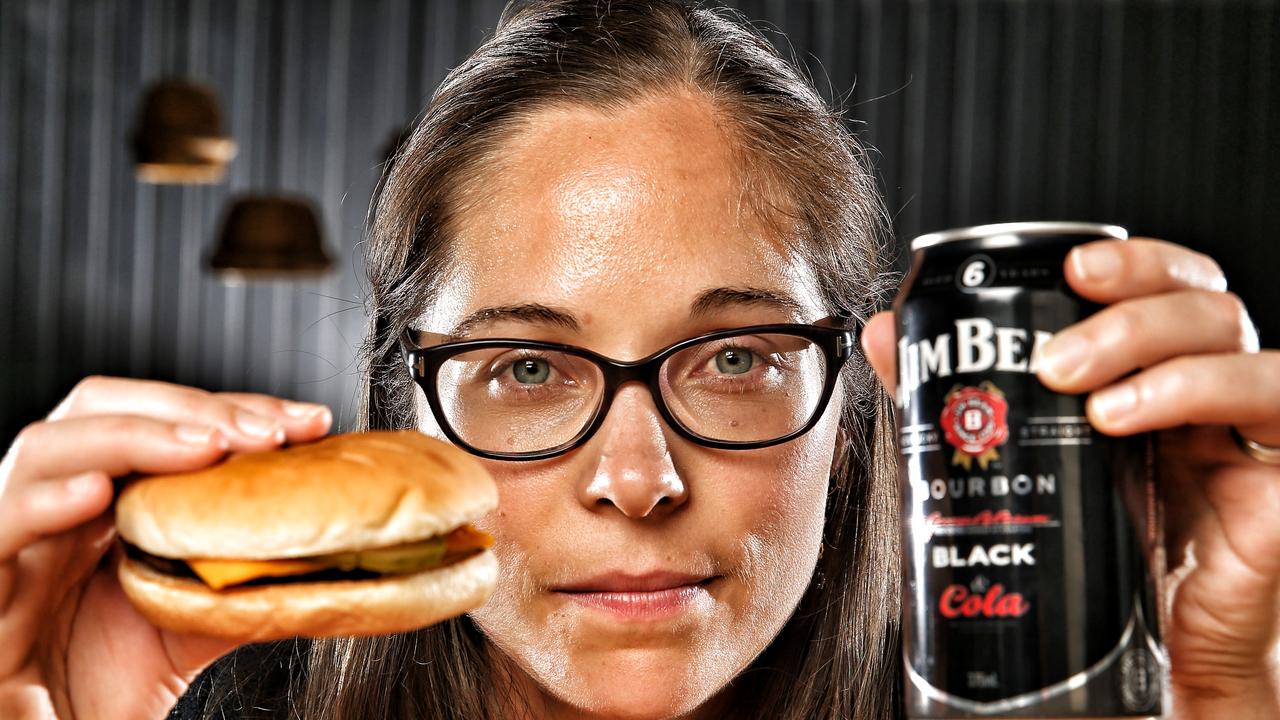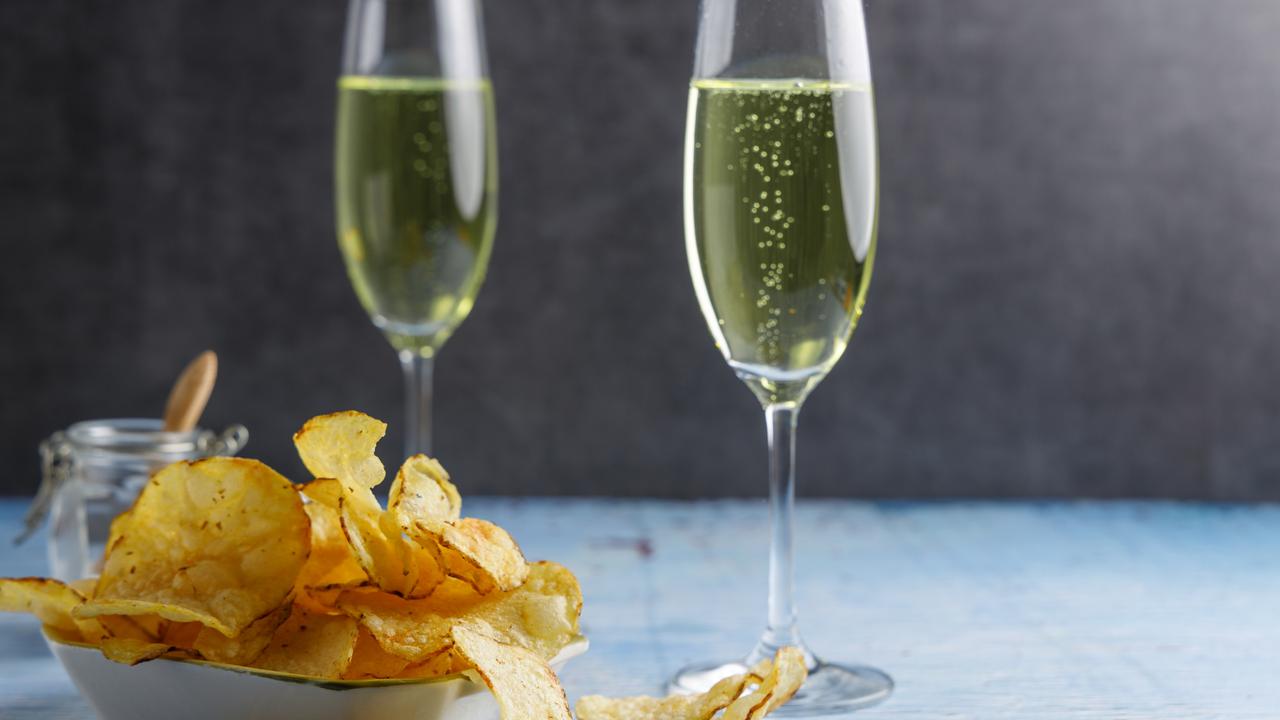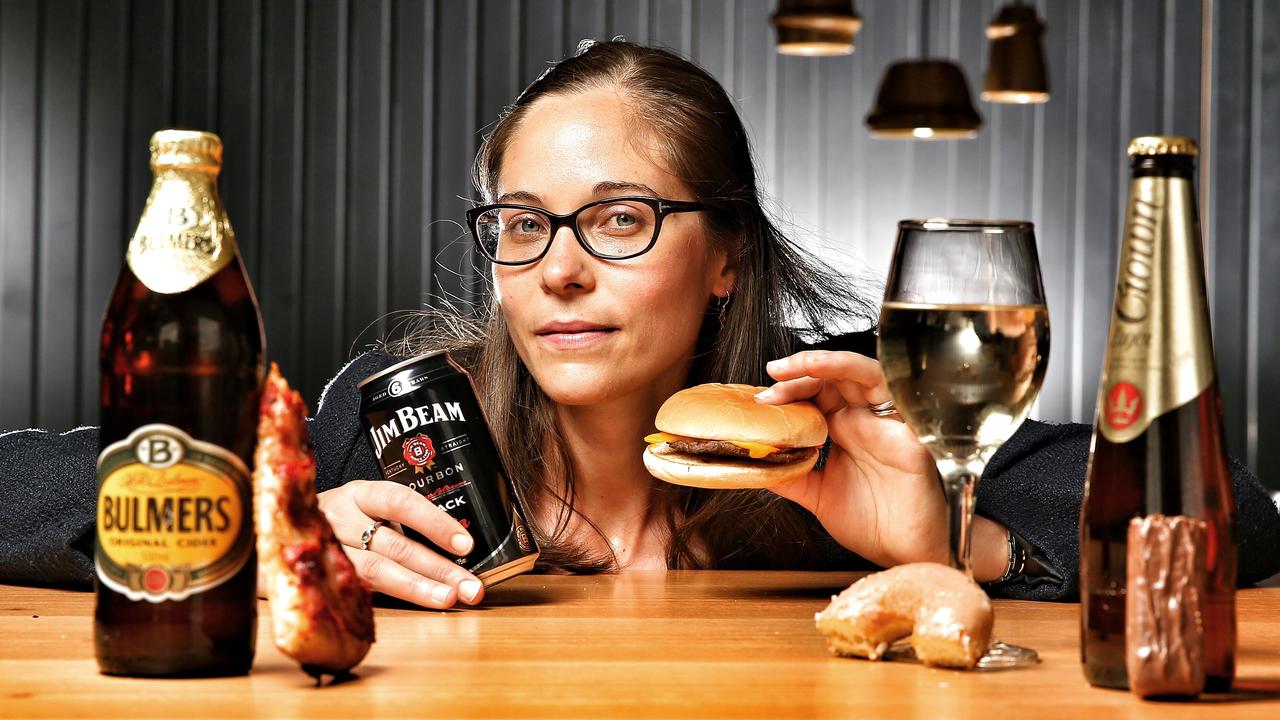Lose weight: Compare how many calories in your alcohol
Alcohol contains as many calories as junk food. Just how much? See table to compare and tips on how to control your alcohol use.

Health
Don't miss out on the headlines from Health. Followed categories will be added to My News.
A can of premixed spirits contains as many calories as a chocolate bar, and switching your drinking habit to soda water could help you shed kilos, a shocking analysis shows.
Two glasses of prosecco or a pint of full-strength beer are equivalent to eating a slice of pizza.
And if you down two bottles of cider, you’ll be drinking as many calories as there are in a cheeseburger.
You would have to walk at a moderate pace for around an hour to burn off the calories in these drinks.
Switching out one premix drink for a soda water would eliminate up to 990 kilojoules from your day.
Opting for a non-alcoholic version would slash the kilojoule intake by 70 per cent to just 290 kilojoules.

The alcohol junk food index was prepared by the Cancer Council’s Live Lighter healthy eating initiative to highlight how alcohol is the sneaky reason you could be putting on weight.
A Cancer Council Victoria analysis of premixed drinks sold in major chains in 2023 found alcohol companies try to hide the number of calories in their drinks by not printing the information on the label.
Only 148 out of the 259 premixed alcohol products surveyed had nutrition (and kilojoule) information on the label.
News Corp’s Health of the Nation survey of 3000 Australians found half of us drink alcohol once a week or more often, with 35 per cent (one in three) drinking multiple times a week.
Alcohol is the largest discretionary source of energy in the diets of Australians, Live Lighter dietitian Alison McAleese said.
It accounts for 16 per cent of the daily energy intake of a typical Aussie, around double the 8 per cent provided by junk foods like cakes and muffins, she said.
“We know that alcohol causes seven different types of cancer and, on top of that, being an unhealthy weight is a risk factor for 13 types of cancer,” Ms McAleese said.
“You can make a huge difference just by having alcohol free days or spacing your drinks on the days that you do drink so that you’re having some non-alcoholic drinks in between”.

If you cut out beer and you replace it with soft drink, you’re not going to get as big a benefit because a 600ml soft drink contains more than your daily allowance of sugar and around 1000 kilojoules.
One option is to swap your alcoholic drink for a non-alcoholic version.
The huge range of non-alcoholic wines, beers and “spirits” entering the market not only have less alcohol, they have between 70-80 per cent fewer kilojoules than the alcoholic version.
“Most of the most of the energy in alcoholic drinks comes from the alcohol,” Ms McAleese said.
“Alcohol is really energy dense – more energy dense than sugar – and that’s why it contributes to weight gain so much,” she said.
“Even if it says no carbs, no sugar on the label, that’s just marketing. The most important thing is how much alcohol are you having. So the best option is a no alcohol beer”.
Swapping your alcoholic gin and tonic premix for the non-alcoholic versions will eliminate 610 kilojoules per 330ml can.
A 150ml glass of alcoholic sauvignon blanc contains over 420 kilojoules compared to just 83 in the zero alcohol version.
Full-strength 5 per cent alcohol beer has 580 kilojoules, light beer (3 per cent alcohol) has 363, and non-alcoholic beer just 297 kilojoules.
To lose around half a kilo a week you would need to cut out 2000 kilojoules a day.
Check out these ideas for lower kilojoule beverages: https://livelighter.com.au/eating-well/healthy-eating/sugary-drinks
More Coverage
Originally published as Lose weight: Compare how many calories in your alcohol









